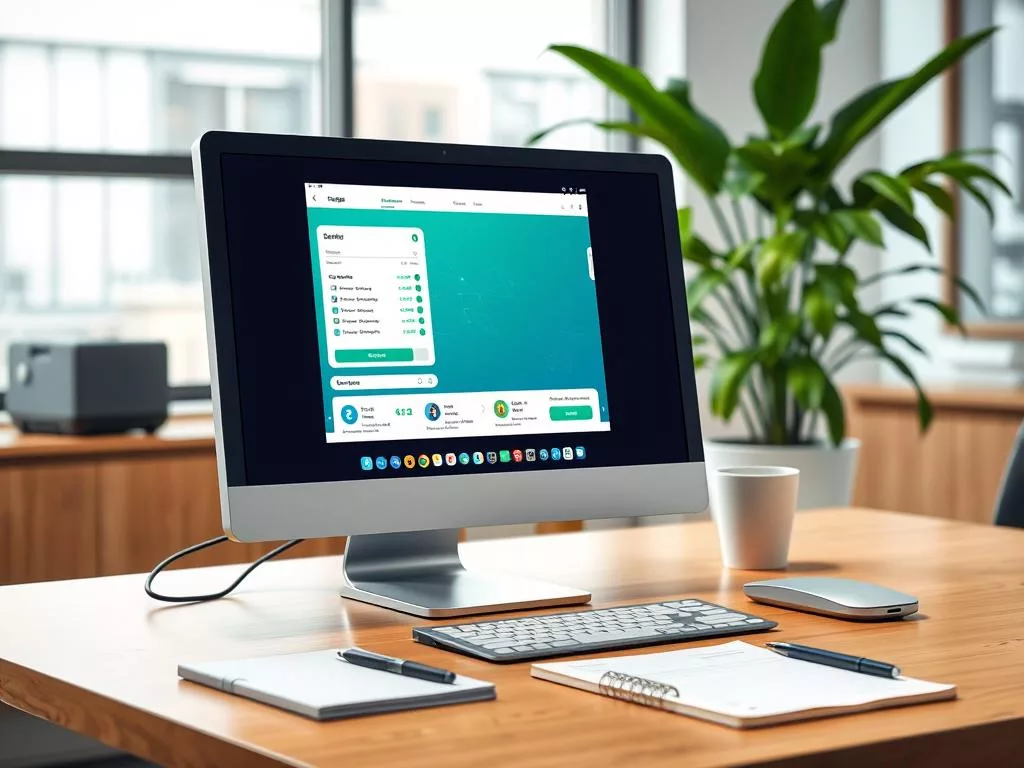The Ultimate Guide to Direct Deposit is your go-to resource for understanding its benefits. It’s a key part of modern payroll processing, making it easier to send money to employees’ bank accounts. Over 90% of U.S. employees like it because it’s convenient and secure.
Businesses save money too, with less need for paper checks and lower postage costs. Setting up direct deposit can cost between $50 to $149, but ongoing fees are usually low. This helps companies save money over time.
Employers get better at handling payroll and following the law. They make sure salaries are paid on time and avoid fraud. Plus, using less paper helps the environment, showing a company cares about the planet.
If you want to learn about other payment methods, check out this link. Using direct deposit makes employees happier and more likely to stay with the company. It shows a company values security and the environment.
Understanding Direct Deposit and Its Benefits
Direct deposit sends wages straight to an employee’s bank account, skipping the need for paper checks. This method brings many benefits, like making payroll smoother and payments safer. Employees get their money right away, without waiting for checks to clear.
Businesses save money by using less paper and cutting down on check fees. Direct deposits are fast, usually within two days. This makes payments safer by avoiding lost or stolen checks.

A 2023 survey by the American Payroll Association found 95% of people get paid this way. Employers first do a small test deposit to check the account info. Most paydays are set up to deposit money before 9 am.
Direct deposit also helps with saving money by letting employees split their pay into different accounts. It makes following payroll rules easier, reducing mistakes and work for employers. Services like Wise Business make sending money abroad easier, helping with global payroll.
It’s also good for the planet because it cuts down on paper waste. But, it requires a bank account and can be delayed if payday is on a weekend or holiday. Despite these, the benefits make direct deposit a great choice for everyone.
To start direct deposit, you need a bank account, a form from your employer, and your bank details. Banks like Capital One, Chime, and Varo Bank let you get your money early, making it even more convenient.
In summary, direct deposit is a fast, safe, and eco-friendly way to get paid. It makes getting money quicker and helps businesses save money, making payroll easier and payments more secure.
How to Set Up Direct Deposit for Employees
Setting up direct deposit for employees is easy and offers big benefits. First, you need to get the bank details from your employees. This includes the bank name, account holder’s name, and account numbers.

Once you have the details, pick a good payroll service provider like FreshBooks. Make sure it works well with the Automated Clearing House (ACH) network. This makes sending money between banks safe and fast.
- Gather Employee’s Banking Information
- Select a Trustworthy Payroll Service Provider
- Configure the Payroll System
- Obtain Employee Authorization
- Run a Test Payroll
- Roll Out the Setup
Direct deposit is convenient, secure, and saves money. It cuts down on time spent on payroll and reduces costs for paper checks.
Using a payroll service makes setup easier and keeps you in line with laws like the Electronic Fund Transfer Act (EFTA). While there might be costs at first, they pay off as your operations get more efficient.
The table below shows the good and bad sides of direct deposit:
| Benefits | Potential Drawbacks |
|---|---|
| Saves time and effort | Initial setup costs |
| Enhanced security | Employee resistance to change |
| Cost-effective | Bank account required |
| Environmental benefits | Setup takes one to two pay cycles |
Direct deposit helps the environment by cutting down on paper waste. Most American workers already get their pay this way. It’s also the preferred method for 93% of employees because it’s reliable and quick.
Direct deposit is a win for everyone. It makes payments safer, payroll easier, and builds trust with employees. So, businesses should make it a priority to improve their financial management.
Guide to Direct Deposit: Streamlining Your Payroll Process
Direct deposit is changing payroll management by making cash handling and paper checks a thing of the past. It ensures your wages are paid accurately and quickly. Usually, you get your money in two to three business days.
Switching to direct deposit makes payroll easier for businesses. It saves time for both employers and their payroll teams. Payroll software like Rippling and OnPay helps businesses of all sizes work better. They handle tax filings and make it easy for employees to see their pay and benefits.
Picking the right payroll provider is key to getting the most out of direct deposit. Companies like Paylocity are great for businesses with global operations. OnPay is perfect for small businesses, making taxes easier.
Businesses looking to improve their payroll should consider direct deposit. It’s convenient and saves time. It also cuts down on errors and administrative work. Plus, it keeps your payroll information safe and in line with privacy laws.

